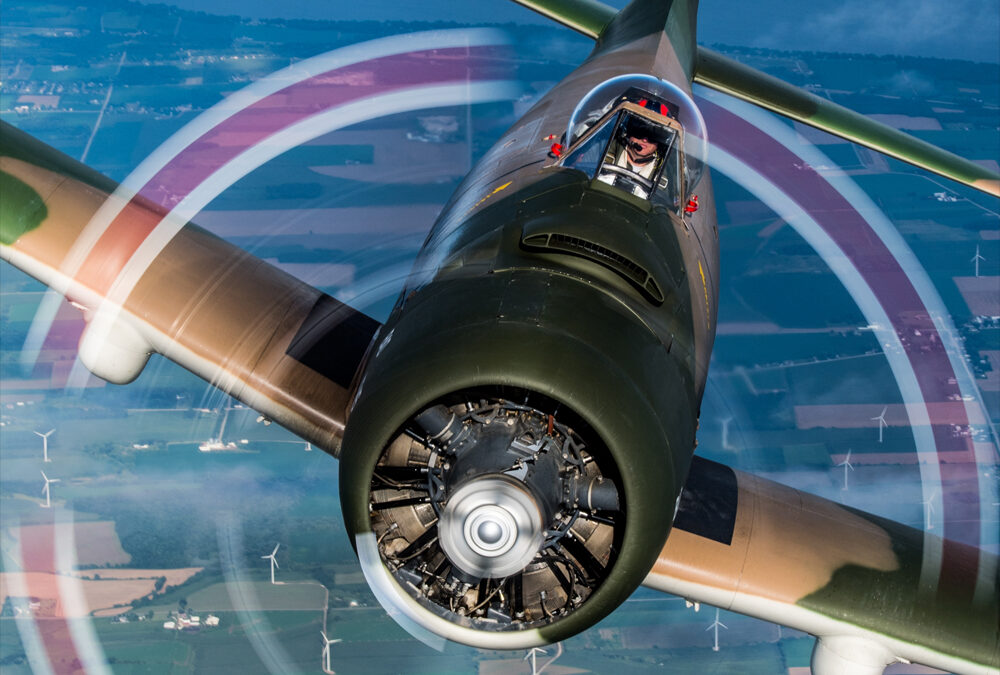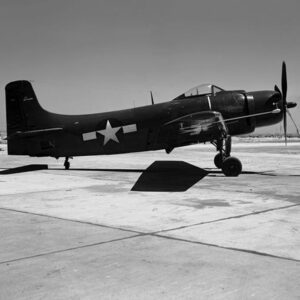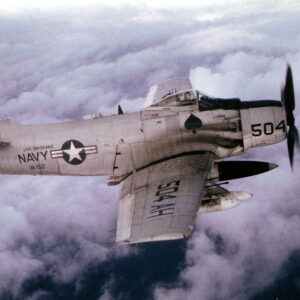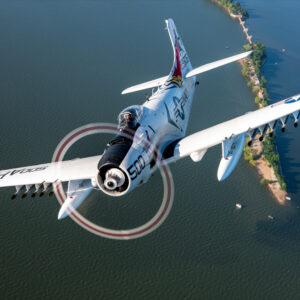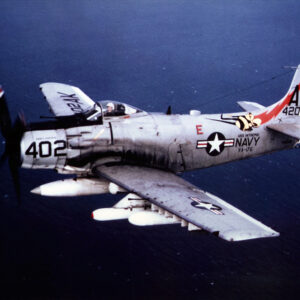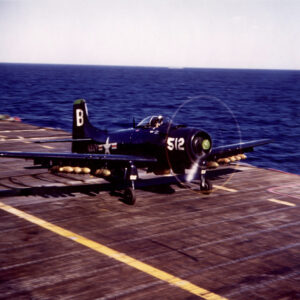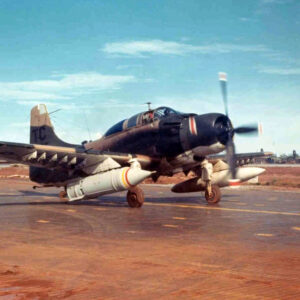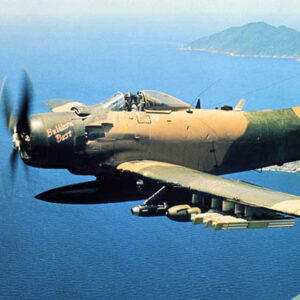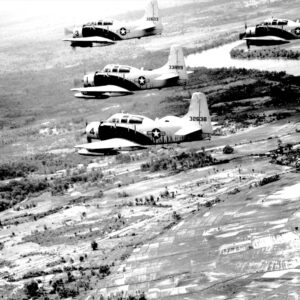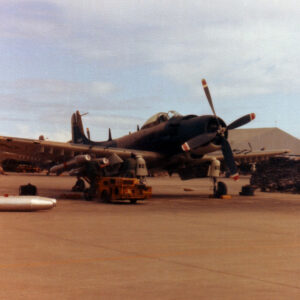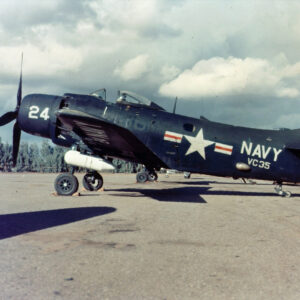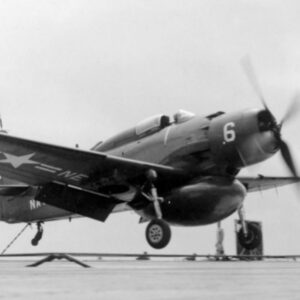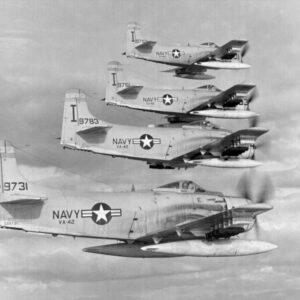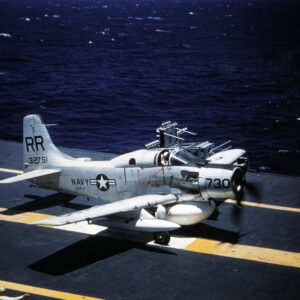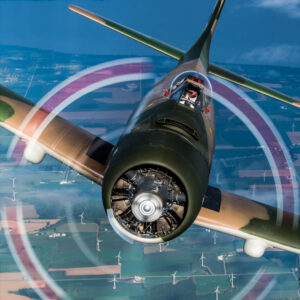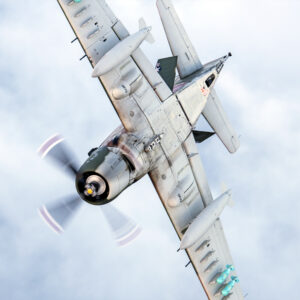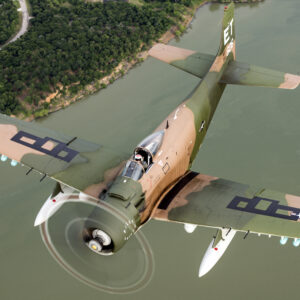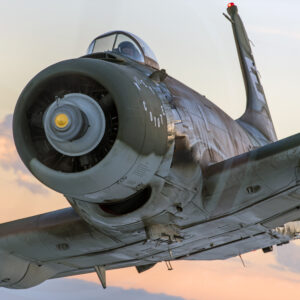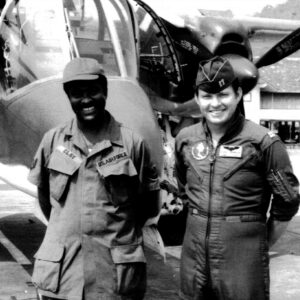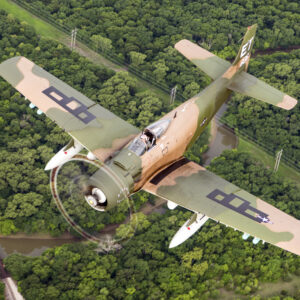The Skyraider went through seven versions, starting with the AD-1, then AD-2 and AD-3 with various minor improvements, then the AD-4 with a more powerful R-3350-26WA engine. The AD-5 was significantly widened, allowing two crew to sit side-by-side (this was not the first multiple-crew variant, the AD-1Q being a two-seater and the AD-3N a three-seater); it also came in a four-seat night-attack version, the AD-5N. The AD-6 was an improved AD-4B with improved low-level bombing equipment, and the final production version AD-7 was upgraded to a R-3350-26WB engine.
For service in Vietnam, USAF Skyraiders were fitted with the Stanley Yankee extraction system, which acted similarly to an ejection seat though with a twin rocket pulling the escaping pilot from the cockpit.
In addition to serving during Korea and Vietnam as an attack aircraft, the Skyraider was modified into a carrier-based airborne early warning aircraft, replacing the Grumman TBM-3W Avenger. It served in this function in the USN and Royal Navy, being replaced by the Grumman E-1 Tracer and Fairey Gannet respectively in those services.
Skyraider production ended in 1957 with a total of 3,180 built. In 1962, the existing Skyraiders were redesignated A-1D through A-1J and later used by both the USAF and the Navy in the Vietnam War.

